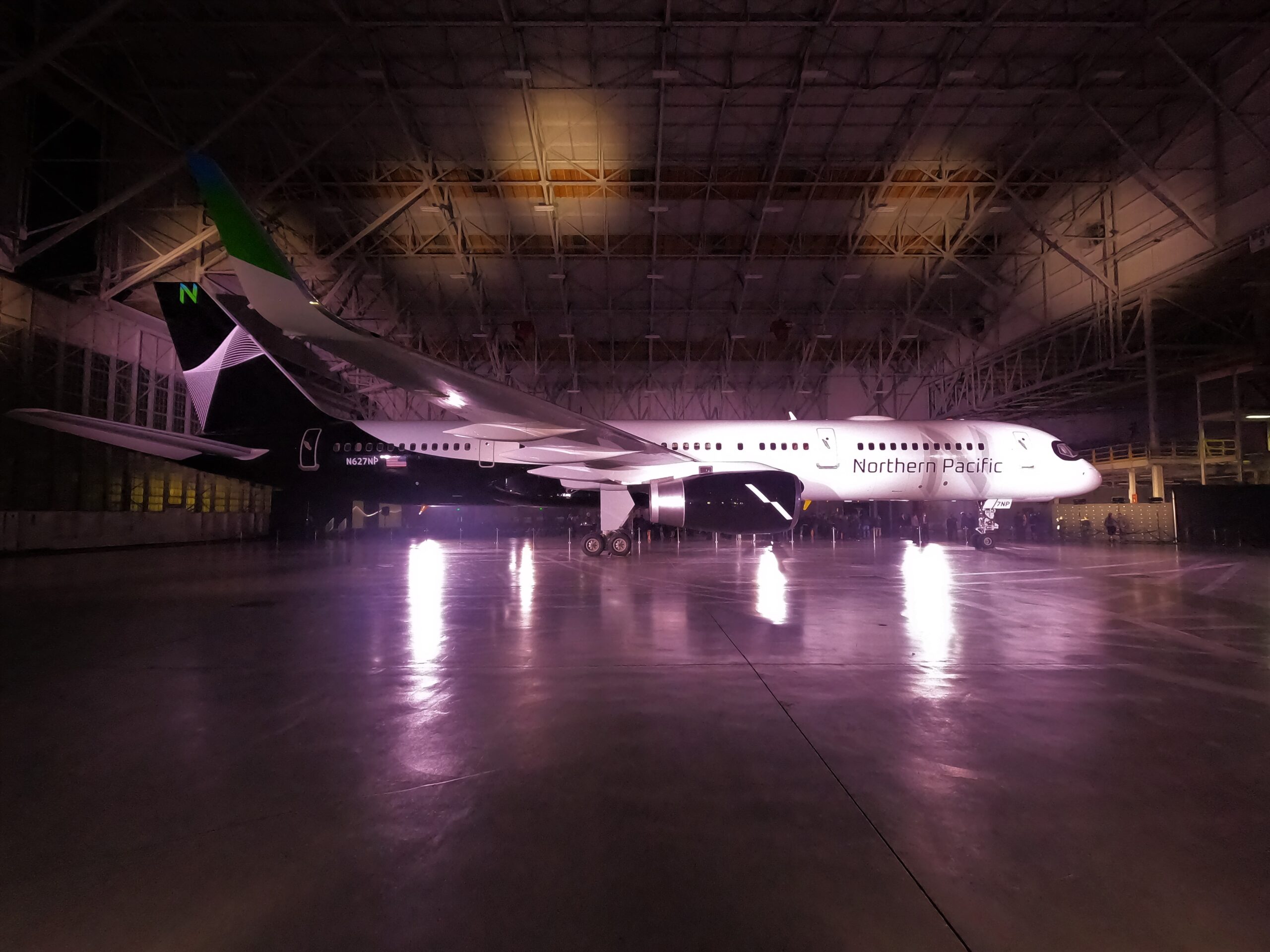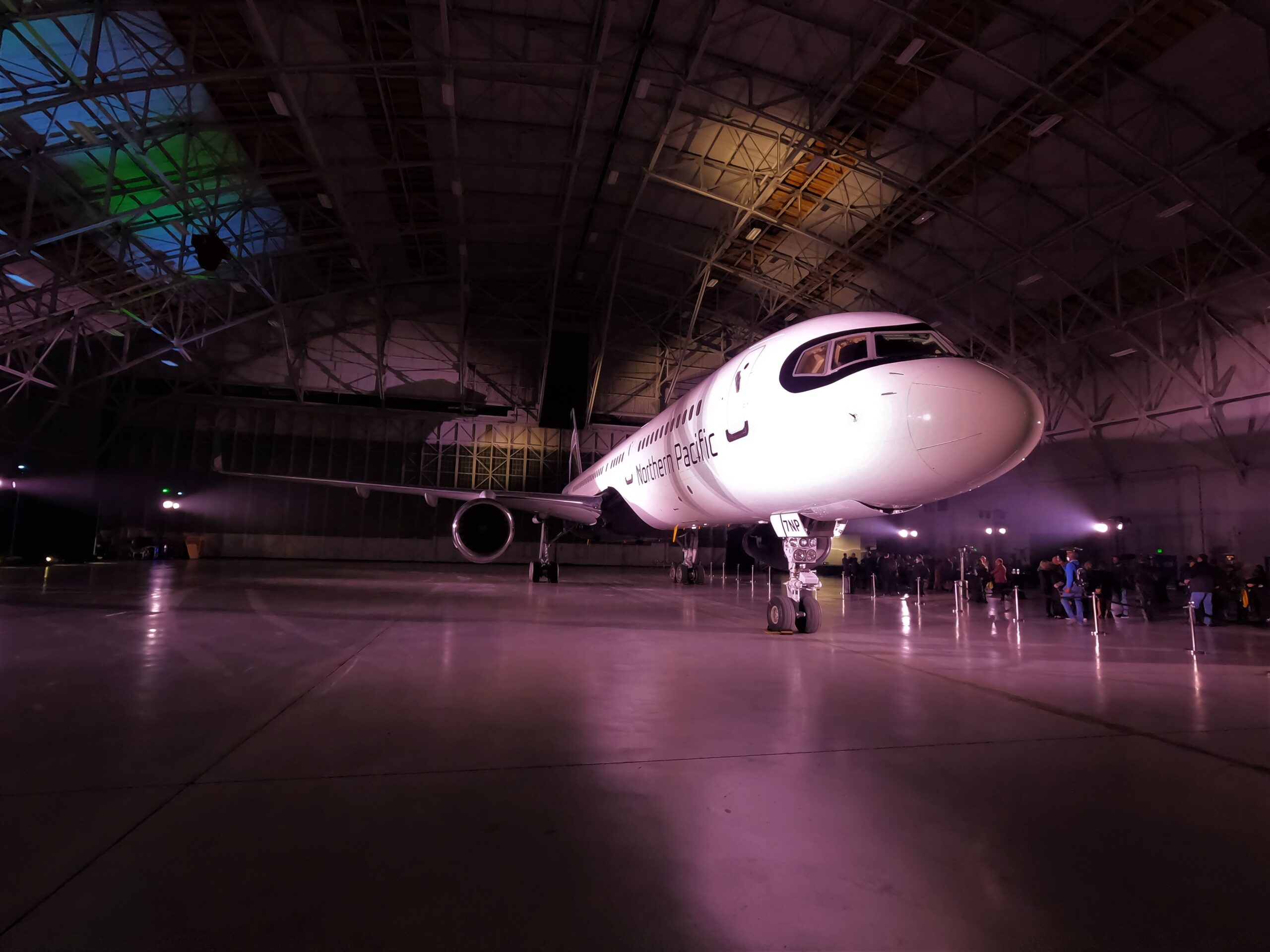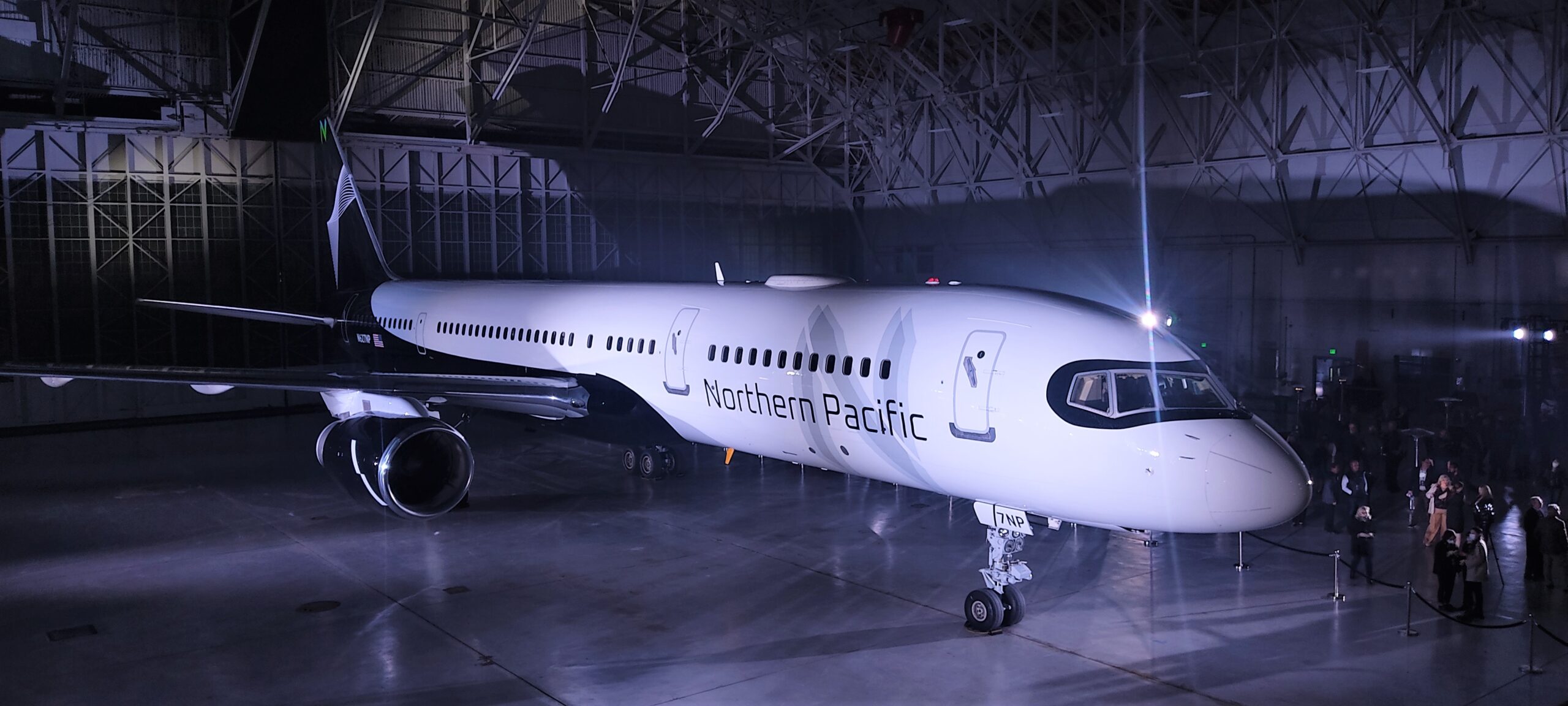It is always good to see a project kick-off, particularly when the common theme of the last few years has been to see companies shut down or run into difficulties. Last night in San Bernardino, California, we witnessed the official birth of Northern Pacific: a bet born in times of pandemic that, even with a number of questions to be answered, will use a classic fleet to deploy a modern product.
The sober and elegant ceremony gave room for the presentation of an old acquaintance: NP’s first Boeing 757-200 entered the AeroPro hangar and quickly became the center of attention. The aircraft remained closed so the interior could not be seen, but from what I spoke with Rob McKinney, CEO of Northern Pacific, the intention is to have 3 classes, instead of the 2 classes they operated last October.
NP’s vision is to link Asia with the U.S. mainland through the big bet: a hub in Anchorage, Alaska. Inspired by and with strong advice from Icelandair, the company seeks to be an alternative to congested U.S. West Coast services in a terminal that has little or no use for such routes.
McKinney and his team are bringing an idea that has already proved to work in Iceland and several other international hubs: the scheduled stopover. Northern Pacific will offer packages to spend a few days in Alaska – connecting with regional operator RAVN – and then continue travel. Icelandair has a lot of experience with this type of offer, and the economics of the cities it serves demonstrated that it is beneficial to all parties. Having a casual chat with the representative of the city of Anchorage, I believe the expectation is high.
As for the aircraft chosen, as McKinney told me, it’s a matter of timing: in the shakeout of the pandemic, many previous-generation aircraft were withdrawn from fleets. For Northern Pacific, the 757-200 is a product of opportunity, as its availability and leasing price made it ideal for operating the routes the company plans to operate. When I asked him why he had launched an airline in the middle of a pandemic, his answer was clear: «We wouldn’t have launched it if we hadn’t seen an opportunity in the middle of the chaos.»
A further NP innovation is the customer loyalty program, which relies on cryptocurrencies as its main attraction: Flight Coin will be the hook with which it will seek to attract passengers, replacing traditional miles. The advantage: passengers will be able to convert their Flight Coin assets to current currency, in addition to being able to pay for services at the airport or in the city. Discussions with the terminal and Anchorage are progressing, and everything is expected to be finalized before the first flight.
There are still issues to be resolved, as the 757 will be operating at the limit of its capabilities and with significant restrictions since, for the avoidance of the costs associated with ETOPS certification, routes to Asia will have very defined margins of distance to alternative airports. NP is looking to grow to 50 aircraft and is starting with 20 757s in mind, although it is already working with Boeing and Airbus to define a new generation replacement that will improve the economic margins of the operation.
For Airbus, the big problem is mainly the backlog: it is difficult to sign a contract with an equipment delivery expectation of at least 5 years. McKinney expects to close a deal soon, but does not exclude other opportunity additions and even considers that there is room for widebodies, and extra cargo capacity: the market for belly cargo is there, but it cannot be covered today.
Northern Pacific starts in 2022 by introducing the aircraft and will be ready to operate -if there are no problems- in the second half of the year. We still have to wait a while to see NP’s distinguished livery flying, and we will have to wait a little longer to know if this venture born out of chaos consolidates itself as a viable alternative.







Comentarios
Para comentar, debés estar registrado
Por favor, iniciá sesión